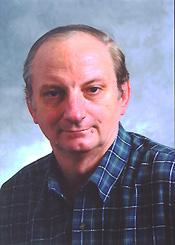- Speaker
- Prof. Edward S. Fry
- Department of Physics, Texas A&M University, USA
- Abstract
Optics plays a major role in oceanographic studies. Some specific examples include (i) simultaneous measurements of all sixteen elements of the Mueller matrix for light scattering at angles from 10˚ to 160˚; (ii) a highly accurate formula for the index of refraction of water for λ=200 nm to 1100 nm, for salinities 0 to 180 parts per thousand, and temperatures from -24˚C to +30˚C; (iii) use of Brillouin scattering for remote sensing of temperature profiles in the ocean; (iv) integrating cavity measurements of the optical absorption of pure water in the visible; (v) recent measurements (in press) of the optical absorption of pure water the near UV from 250 nm to 400 nm; and (vi) an innovative bb meter that provides a simple geometric and classical optics solution to a 25 year-old problem.
Some of these will be only briefly reviewed in this presentation; the others will be discussed in more detail, especially the UV water absorption measurements and the bb meter. The UV water absorption measurements were made possible by the development of a new diffuse reflector whose performance far exceeds anything previously available in the UV. The bb meter is a new device that provides highly accurate (a few tenths of a per cent) measurements of the integral over solid angle of the volume scattering function, β (λ, θ, φ). The parameter bb carries useful information about seawater constituents that scatter light. And, since the spectral reflectance of the ocean (known as ocean color) is proportional to bb, measurements of ocean color from remote optical sensors on satellites provide a unique capability to monitor surface ocean properties (e.g. chlorophyll and biological productivity) over extended spatial/ temporal scales.
- About the Speaker
Dr. Edward Fry, Distinguished Professor and former Head of the Department of Physics& Astronomy at Texas A&M University, holds the George P. Mitchell Chair in Experimental Physics and has been with Texas A&M since 1969. He is Past-Chair of the Texas Section of the American Physical Society, and is a fellow of both the American Physical Society and the Optical Society of America. He received the Association of Former Students Distinguished Faculty Teaching Award (1993), the Texas A&M Distinguished Scientist Award of Sigma Xi (2001), and the Association of Former Students Distinguished Faculty Achievement Award (2012). Dr. Fry’s research interests cover the gamut from basic research to applied research. Some notable achievements include: (i) one of the first, and definitive, Bell inequality tests of the foundations of quantum mechanics – addressing questions first raised by Einstein; (ii) the first observations of Lasing Without (population) Inversion (LWI); (iii) a new integrating cavity technique for the measurement of optical absorption in the presence of even severe scattering, leading to what are now widely considered the standard reference data for pure water absorption; (iv) a new diffuse reflector whose reflectivity is so high that ring-down spectroscopy in an integrating cavity is now possible.
- Date&Time
- 2016-08-22 10:00 AM
- Location
- Room: A403 Meeting Room




